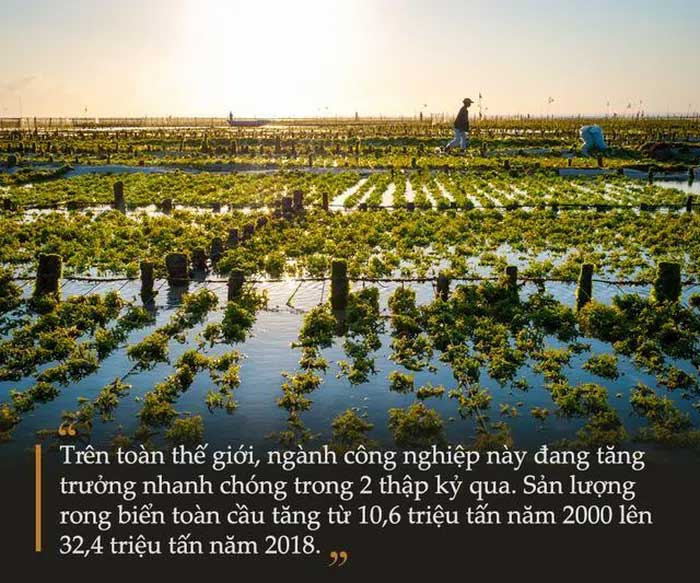Found in almost every ocean around the globe, seaweed is not only familiar to many coastal communities but also holds immense potential in the fight against global climate change.
A Treasure Slowly Revealed
Like many coastal communities worldwide, those who rely on the sea in the United Kingdom have been harvesting and consuming seaweed for decades. In Wales, their special cake is made from a type of seaweed known as laver. This dish is so revered that it has been granted protected status.
The uses of seaweed extend far beyond the dining table. Today, it is found in everything from cosmetics and animal feed to gardening products and packaging.
As concerns over environmental issues, food security, and climate change grow, seaweed—a vibrant treasure with an array of colors, shapes, and, importantly, fully edible—will play a crucial role in the sustainable future of our planet. The UK recognizes its importance and is eager to act.

In April, a project dubbed the “UK’s first dedicated industrial seaweed facility” was officially launched. Experts hope to kickstart the commercialization of an industry that is popular but has yet to receive adequate investment worldwide.
The Seaweed Academy has received nearly $500,000 from the UK government to initiate studies aimed at stimulating “the growth of seaweed farming in the UK.” Initially, the project will focus on “high-value markets” and utilize its research to enhance the global competitiveness of UK seaweed products.
However, contrary to popular belief, the seaweed industry will look “very different” from other agricultural industrialization activities. There will be no giant machines diving into the sea to harvest or assist in cultivation. From the outside, it appears to be just buoys floating on the water, with long lines below them hosting massive seaweed clusters. Harvesting will also be quite “manual.”
Nevertheless, numerous challenges remain, from obtaining farming permits to natural disasters and storms threatening the seaweed industry. It will take several years for research to identify the optimal models to elevate seaweed production to an industrial scale.
Searching for the Perfect Model for the Seaweed Industry
The UK’s interest in cultivating and harvesting seaweed has not yet impacted traditional activities. In the picturesque county of Cornwall at the southwestern tip of England, the Cornish Seaweed Company continues its operations as it has since 2012 while providing insight into how this industry may evolve in the coming years.
Tim van Berkel, co-founder and CEO of the company, stated that they are harvesting natural seaweed from the coasts for food. In 2017, the business also began cultivating seaweed from spores at a mussel farm off the coast of Porthallow, a fishing village in Cornwall.
“They grow along lines suspended in the water. Cultivating seaweed this way is similar to farming mussels. The company is currently growing two types of seaweed in this area. Additionally, we harvest six types of natural seaweed year-round from waters across the country,” Berkel said.

Many other enterprises are also seeking to make their mark in this field along the UK’s coastlines. There is a focus on cultivating seaweed species native to those waters to increase productivity.
In 2020, a report from the Food and Agriculture Organization of the United Nations described seaweed farming as being dominated by “countries in East and Southeast Asia.” This is a significant industry, generating $14.7 billion in 2019 solely from the value of seaweed.
Massive seaweed farms in China and Indonesia demonstrate that this industry has grown on a large scale. However, it is not just in Asia; in the United States, large farms are also emerging in various regions, from New England to Alaska and the Pacific Northwest.
Nonetheless, economic value is not everything. Scientists at the National Oceanic and Atmospheric Administration (NOAA) emphasize that “seaweed absorbs CO2 and uses it for growth. It also absorbs nitrogen and phosphorus.”
Globally, this industry has been rapidly growing over the past two decades. Global seaweed production increased from 10.6 million tons in 2000 to 32.4 million tons in 2018. However, there are also issues, such as seaweed being over-cultivated and invading surrounding environments, or seaweed farms impacting the ecosystem.
Still, compared to the benefits it offers, countries continue to invest heavily in development and are seeking ways to plan for maximum efficiency to create a sustainable industry.





















































